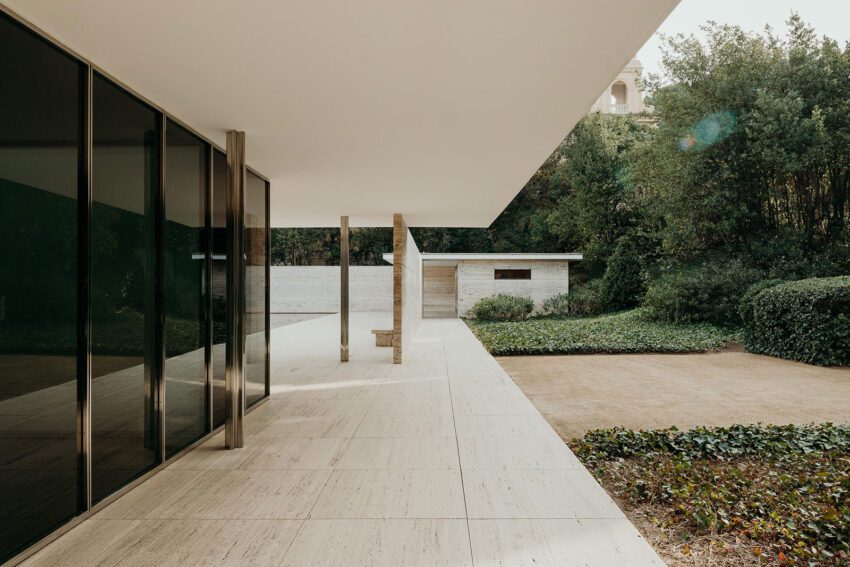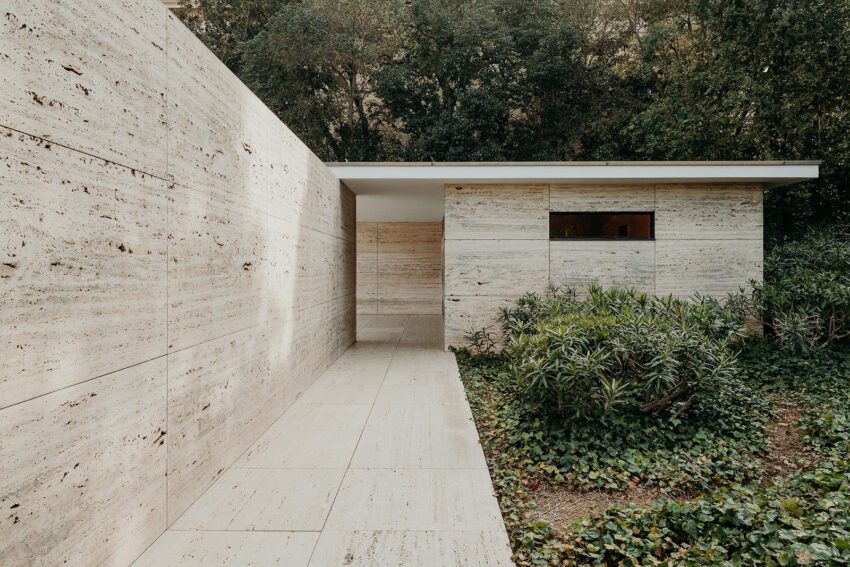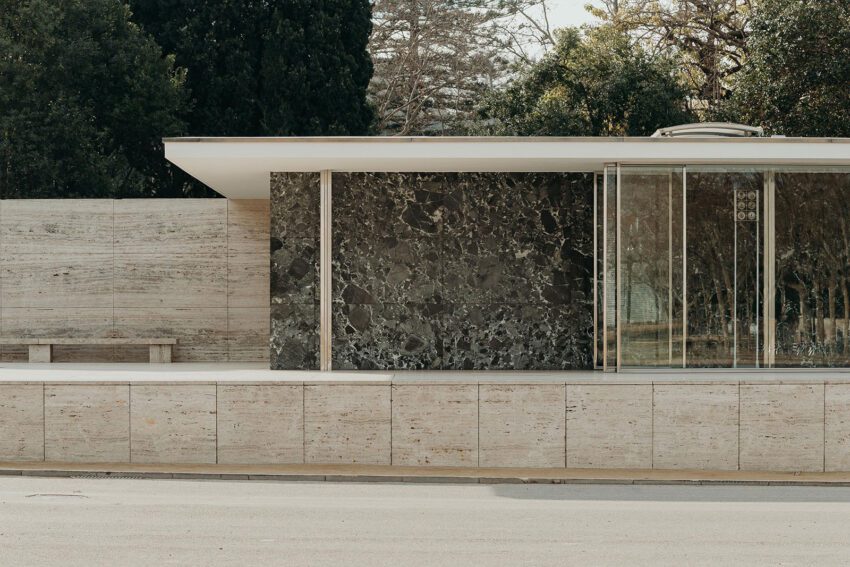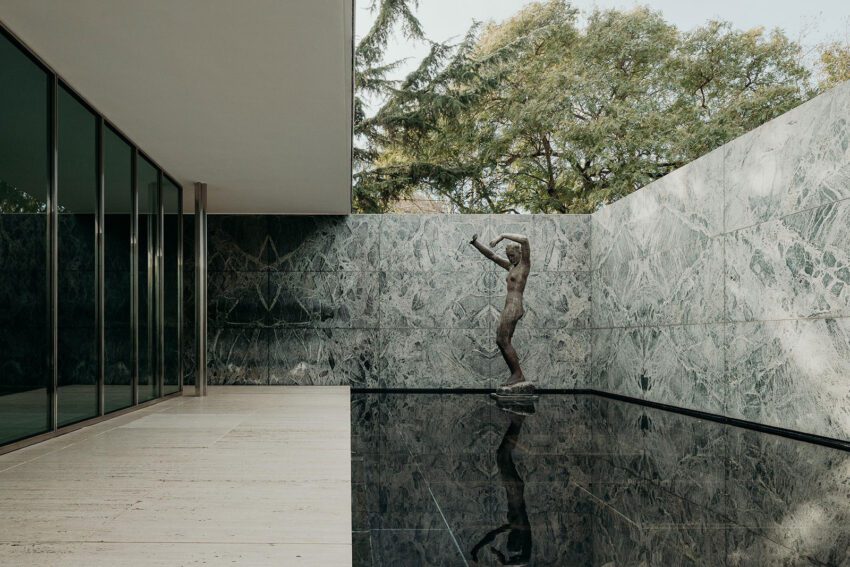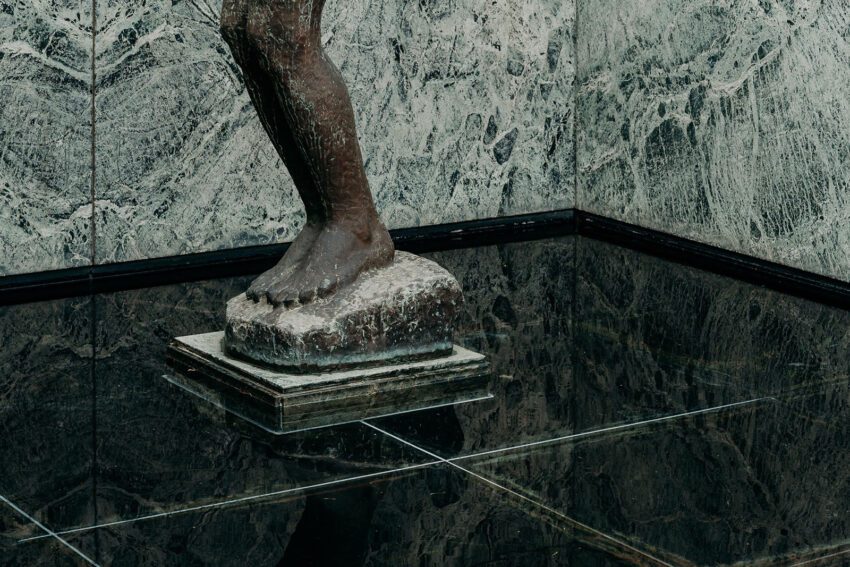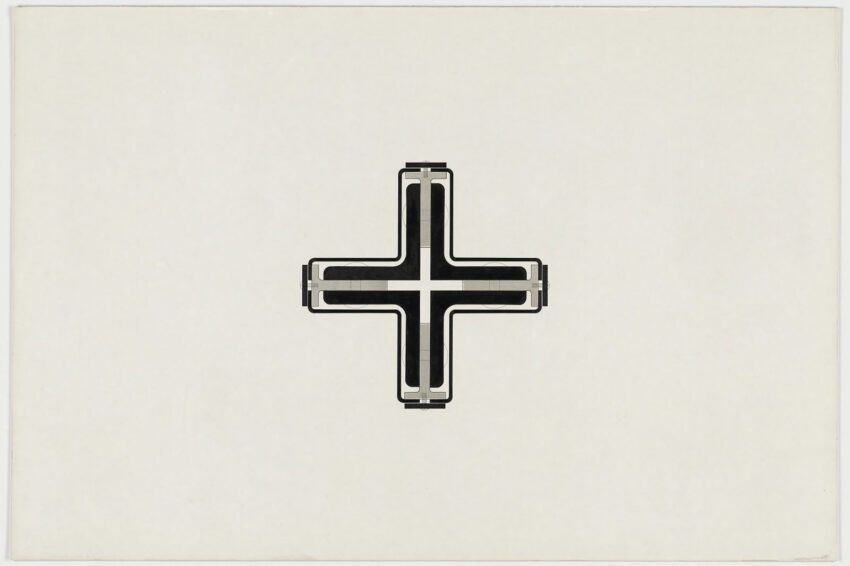Mies van der Rohe’s Barcelona Pavilion is a seminal piece in the canon of modernist architecture. Commissioned by the German government for the 1929 International Exposition in Barcelona, the Pavilion is widely acclaimed as a paragon of van der Rohe’s innovative philosophy. It illustrates a departure from traditional architecture and offers a pioneering vision for the future.
The Pavilion was initially designed to host the official reception led by the Spanish king, but its influence extended far beyond its functional role. It is a remarkable study of proportion, material, and spatial organization, highlighting van der Rohe’s ability to redefine space and manipulate perception through architectural design.
The Barcelona Pavilion Technical Information
- Architects: Mies Van Der Rohe
- Location: Barcelona, Spain
- Topics: Minimalism, Modernism
- Area: 150 m2 | 1,620 ft2
- Project Year: 1929
- Photographs: © Maciej Jezyk
Architecture is the will of an epoch translated into space.
– Mies Van Der Rohe1
Barcelona Pavilion Photographs
Geometry and Space: Transcending the Physical
Van der Rohe’s Barcelona Pavilion is a testament to the power of simplicity. Rather than relying on the grandiose designs of historical architecture, van der Rohe focused on clarity and minimalism. The Pavilion’s geometry is straightforward yet powerful; it’s a simple rectangular plan dissected by perpendicular and parallel planes.
Despite its apparent simplicity, the Pavilion’s use of space is complex and innovative. It dissolves the typical distinction between interior and exterior, introducing the concept of fluid space. This is achieved through the seamless interplay of open spaces and intersecting planes. Walls, made of different materials like marble, glass, and polished steel, do not meet at corners but instead appear to slide past each other. This creates an unending sense of space, encouraging the eye to wander freely through the Pavilion. This innovative use of open space is a hallmark of van der Rohe’s style and a key feature of modernist architecture.
Materiality: Fusion of Natural and Industrial
In the Barcelona Pavilion, the choice of materials is crucial in defining the aesthetics and the architectural narrative. Van der Rohe utilized a combination of natural and industrial materials, creating a juxtaposition that challenges traditional norms.
The Pavilion’s walls are constructed from different types of marble, each displaying unique color variations and vein patterns, grounding the structure in natural beauty and imperfection. In contrast, the floor-to-ceiling glass walls and the chrome columns infuse the space with a sense of modern industrialism. The reflective quality of these materials also plays with perception, as the Pavilion’s elements appear to dematerialize, further accentuating the theme of fluidity and openness.
Beyond Architecture: The Pavilion as an Art Piece
What makes the Barcelona Pavilion unique is its transcendent quality; it serves as a building and an art piece that provides a sensory experience. It functions as a conceptual sculpture, where the play of light and shadow, reflections, textures, and the connection with the natural landscape outside all contribute to the overall experience.
One cannot overlook the iconic Barcelona Chair, designed by van der Rohe for the Pavilion. This simple yet elegant piece of furniture, crafted from leather and chrome, is not just an accessory but an integral part of the Pavilion’s design. It mirrors the building’s ethos of functionality and simplicity while enhancing its overall aesthetic harmony.
The Legacy of the Barcelona Pavilion
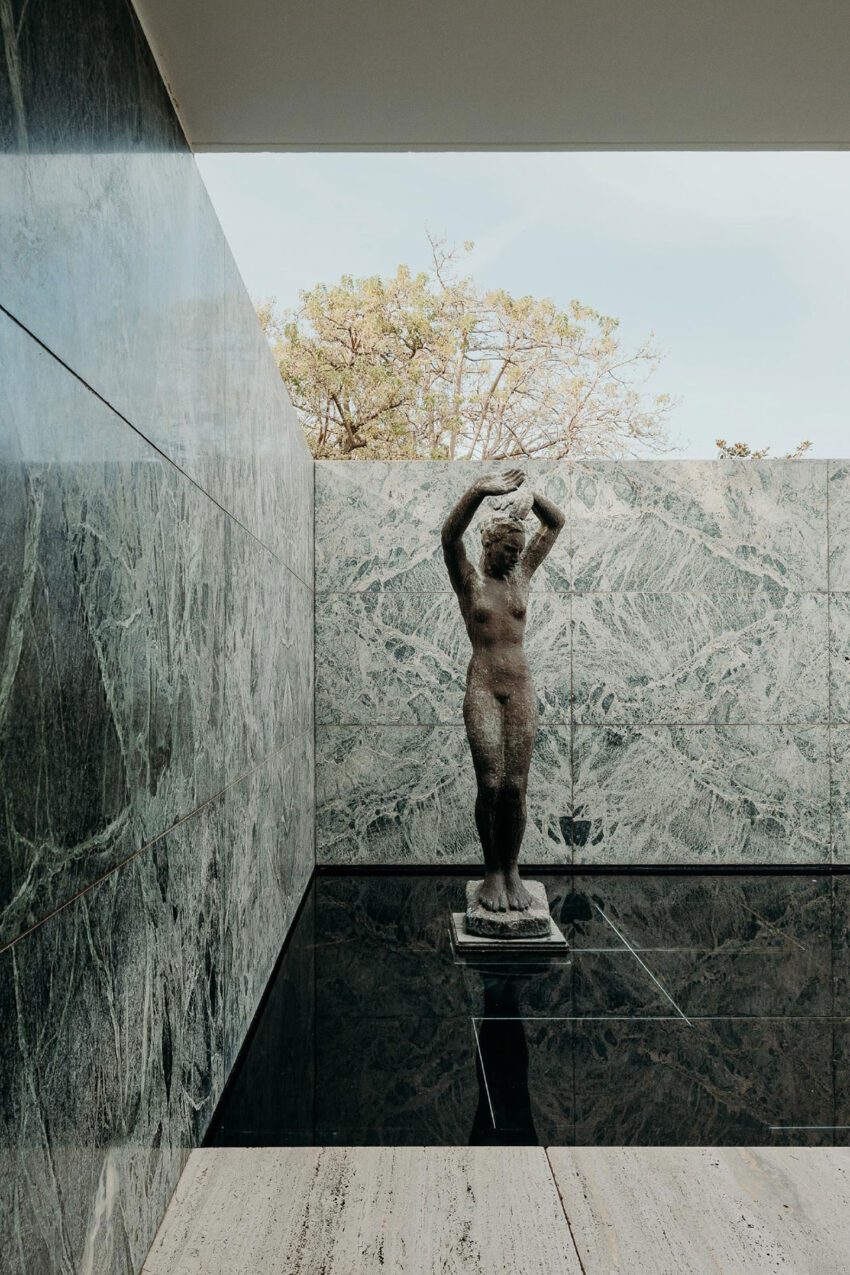
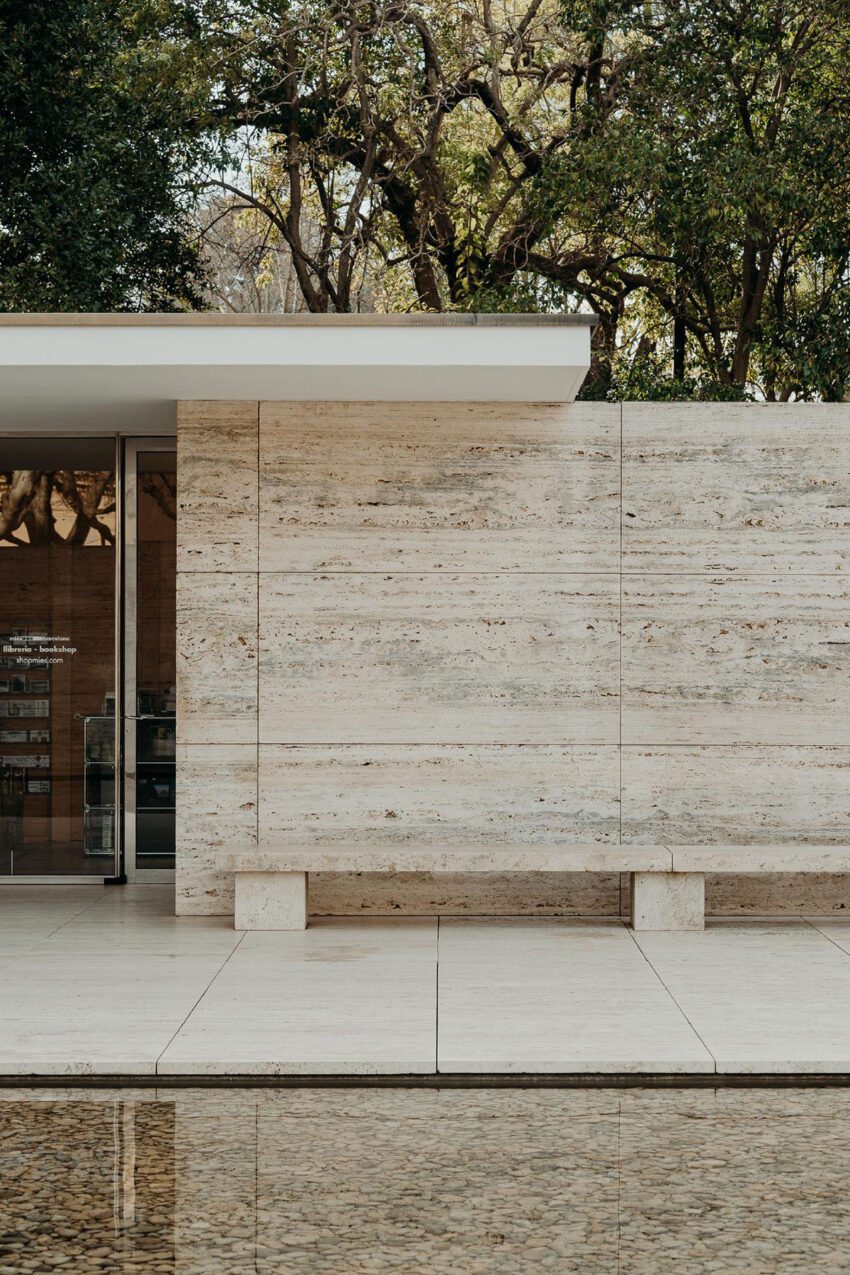
The Barcelona Pavilion remains a crucial reference point in modern architecture decades after its conception. Its innovative use of space, materials, and light inspires architects worldwide and marks a turning point in architectural history.
Van der Rohe’s Pavilion signifies the essence of his famous dictum, “Less is more “1. It exemplifies minimalist architecture, showcasing how simplicity can achieve a profound and beautiful spatial experience. Its radical approach to design and its conceptual depth continue to resonate, testifying to the timelessness of van der Rohe’s vision.
The Pavilion’s Rebirth: A Testament to Its Significance
Interestingly, the original Pavilion was temporary and was disassembled in 1930. However, in 1986, a group of Spanish architects reconstructed the Pavilion on its original site, adhering closely to van der Rohe’s original plans. This resurrection indicates the importance of the Barcelona Pavilion within the architectural discourse and its influence on successive generations of designers.
The recreated Pavilion now serves as a museum and a venue for various exhibitions and events, immortalizing the legacy of van der Rohe and allowing visitors from all over the world to experience firsthand the power and beauty of his architectural vision.
Barcelona Pavilion and Modern Architecture
In a world where architecture is often complex and intricate, the Pavilion reminds us of the power of simplicity, the importance of thoughtful spatial planning, and the potential for materials to evoke sensory experiences. It remains a beacon of inspiration, inviting architects and designers to contemplate the essence of design and challenge traditional conventions.
With its revolutionary design, the Mies van der Rohe’s Barcelona Pavilion has influenced the modernist architectural movement. It signifies a significant shift in architectural thinking, propelling us into an era where architecture is not only about form and function but also about creating meaningful, holistic experiences. Through its pioneering design, the Pavilion continues to impact the discourse of contemporary architecture, asserting its relevance nearly a century after its inception.
Barcelona Pavilion Plans
Barcelona Pavilion Image Gallery
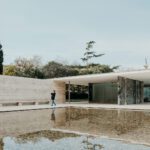


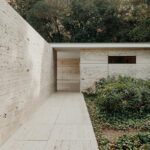

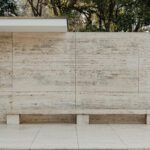
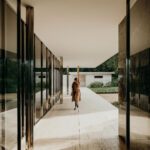

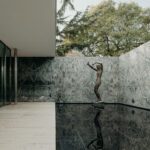

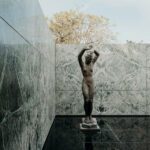

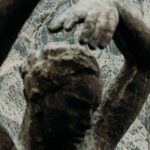


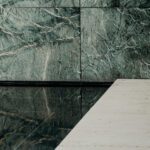

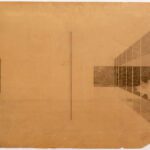


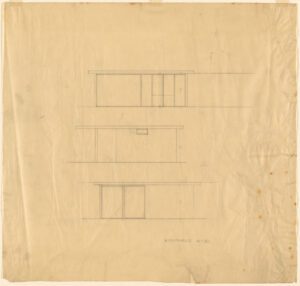
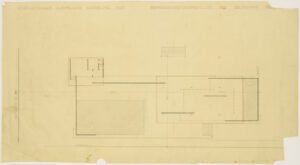
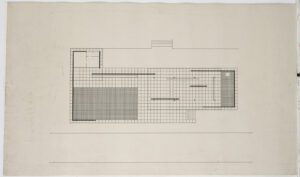

About Mies Van Der Rohe
Ludwig Mies van der Rohe (1886-1969) was a German-American architect widely recognized as one of the pioneering masters of modernist architecture. Starting his career in Germany, Mies rose to prominence through his remarkable designs, characterized by minimalist aesthetics, open spaces, and the honest expression of industrial materials. His influential work, including landmarks such as the Barcelona Pavilion and the Seagram Building in New York, epitomize his famous dictum, “Less is More.” Mies served as the director of the Bauhaus before its closure by the Nazis, and later, he headed the architecture school at the Illinois Institute of Technology. His profound influence on architectural theory and practice resonates in contemporary architecture.
Works from Mies van der Rohe
- Mies van der Rohe: Barcelona-1929 by Remei Capdevila-Werning, Beatriz Colomina, Juan José Lahuerta, Laura Martínez de Guereñu, Dietrich Neumann, Fritz Neumeyer, Spyros Papapetros, Lutz Robbers, Carmen Rodríguez Pedret.


